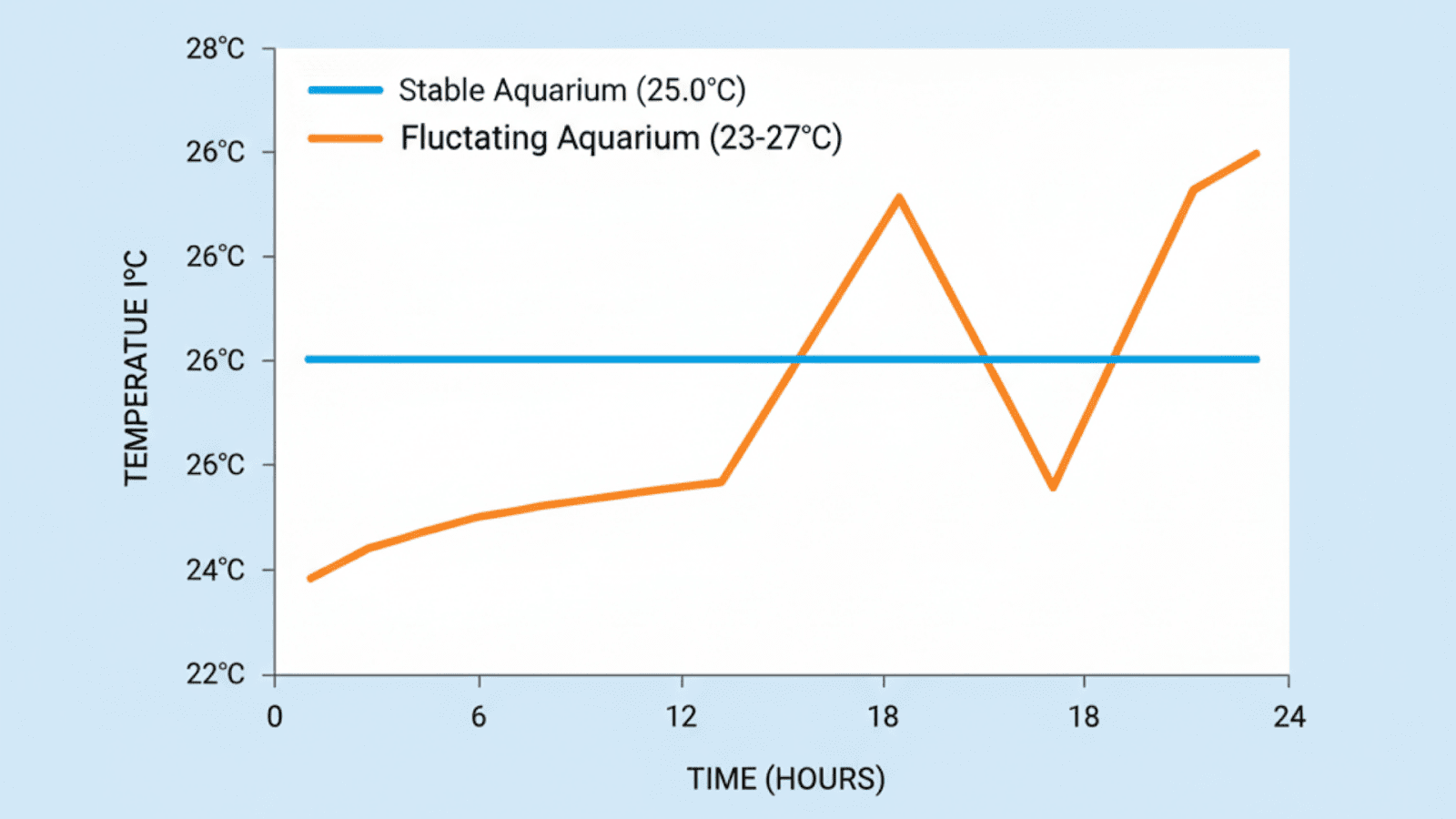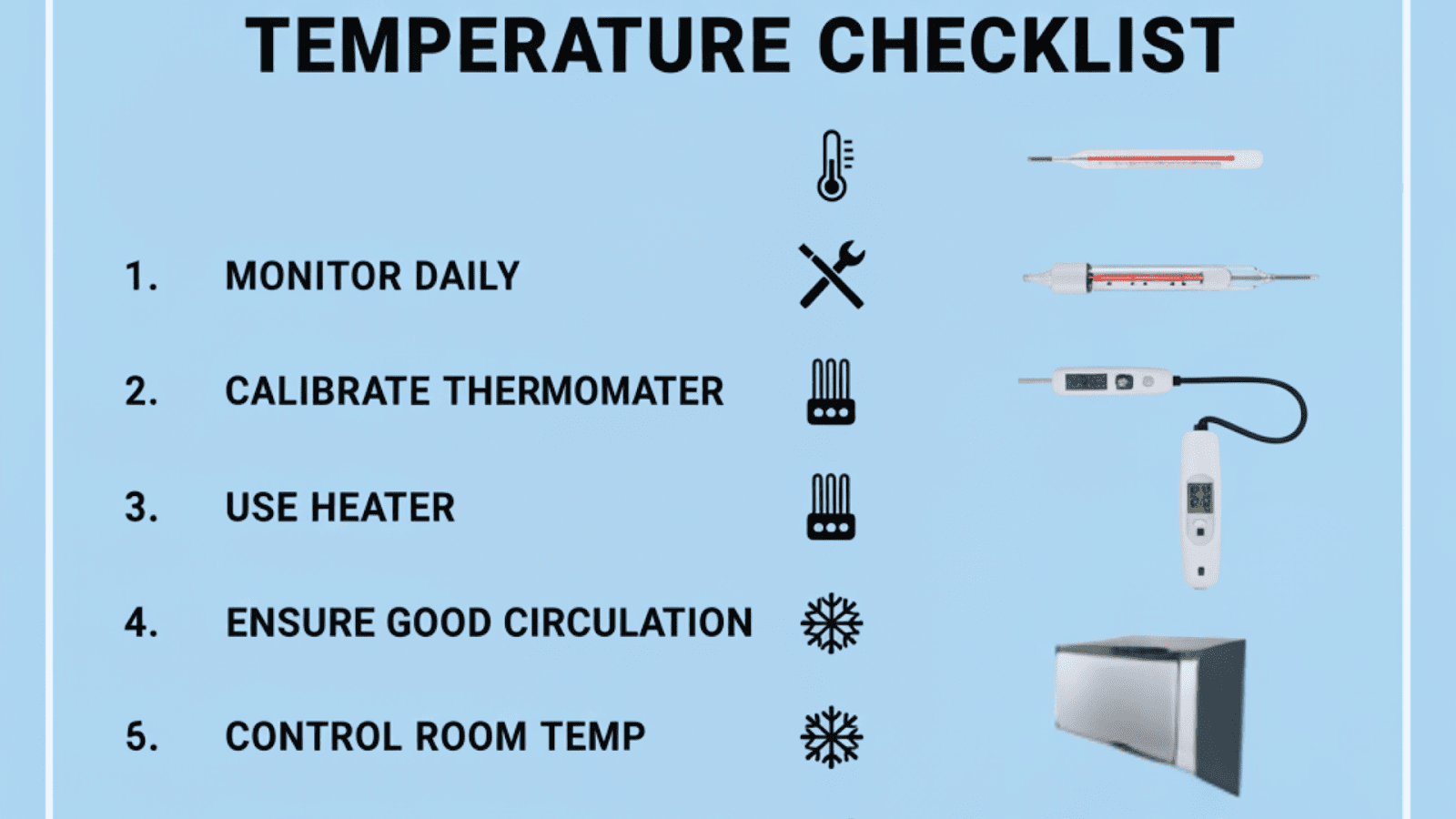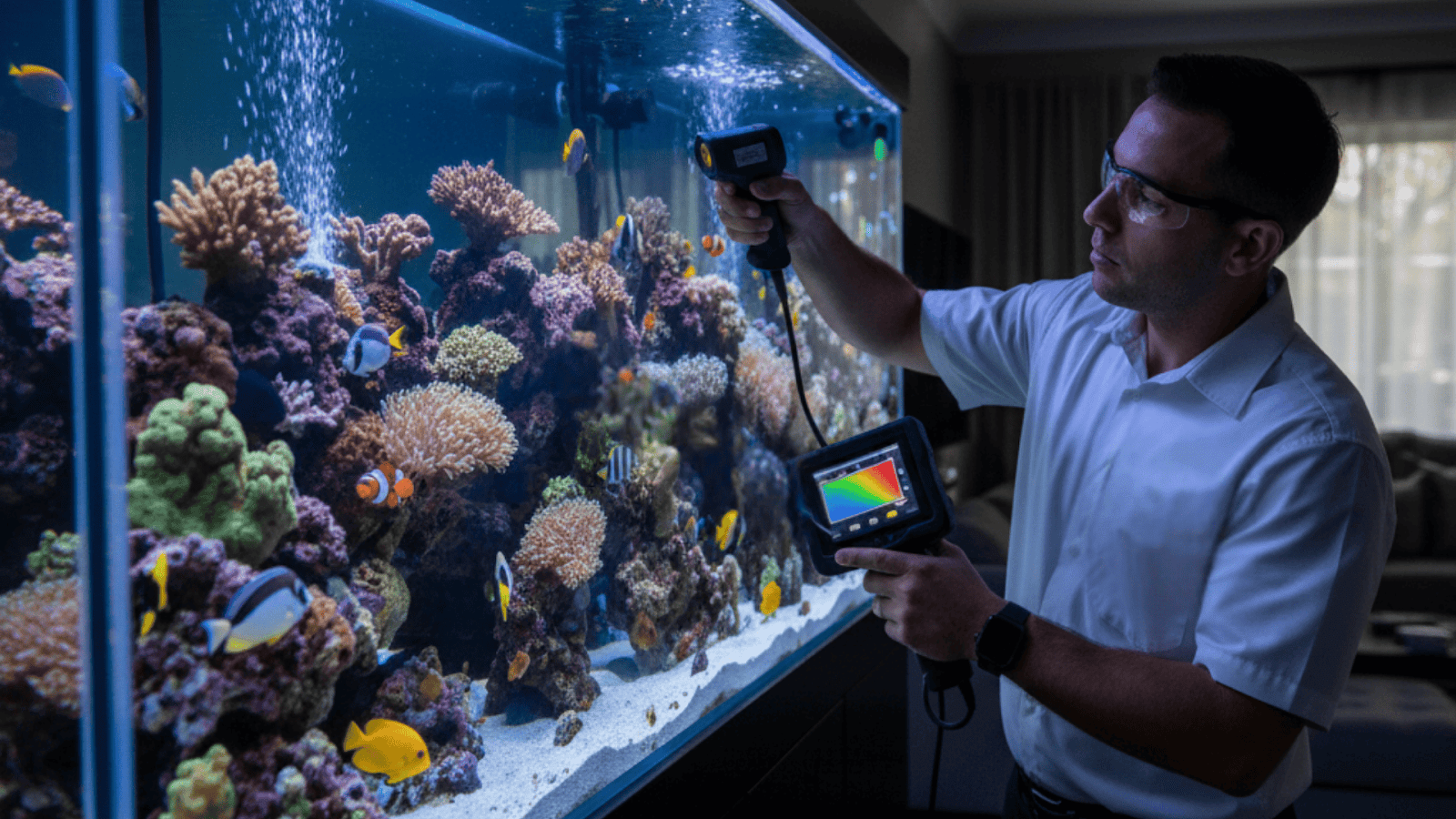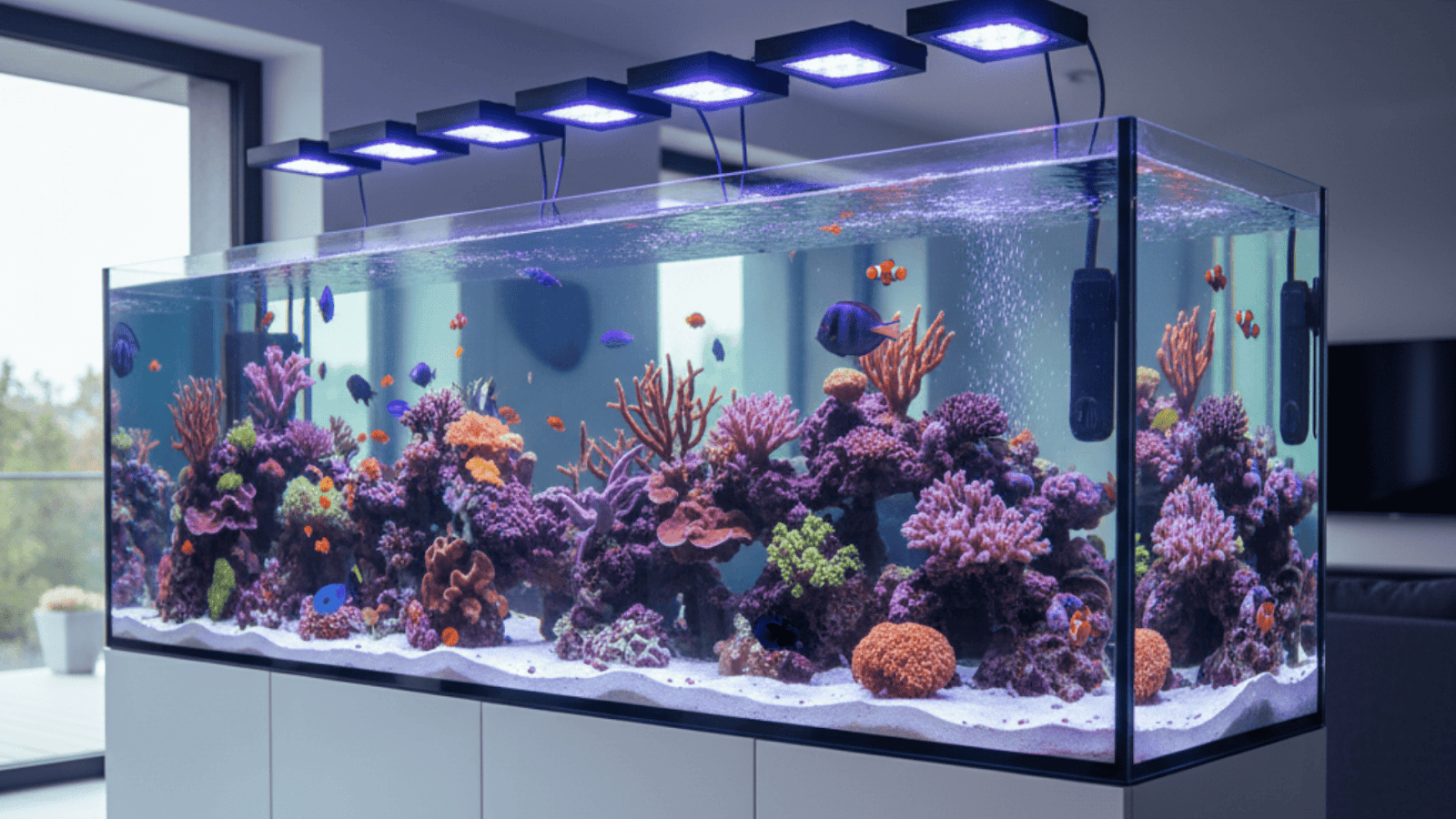Ideal Saltwater Aquarium Temperature and How to Maintain It [2025]


If you’ve ever stared into a saltwater aquarium and marveled at the colors of the corals, the graceful movement of clownfish, or the sparkle of a tang darting through the water, you already know that an aquarium is more than just a decorative tank—it’s a living ecosystem.
From my 30+ years as an aquarium glass and window installation professional, I’ve learned that the glass you choose, its installation, and even how well it’s insulated can subtly impact your tank’s environment. But there’s one factor that can make or break the life inside your tank: temperature.
Saltwater fish and corals are sensitive creatures. Even a few degrees of fluctuation can stress them, weaken their immune systems, and in severe cases, cause disease or death. Just as poorly installed glass can create visual distortions or leaks, a poorly maintained temperature can silently damage your aquarium’s ecosystem.
In this article, we’re diving deep, both figuratively and literally, into the ideal saltwater aquarium temperature, why it matters, and practical, hands-on ways to maintain it.
Let’s begin.
TL;DR: Key Takeaways

- 77–78°F (25–26°C) is ideal for most tropical saltwater aquariums.
- Keep fluctuations to a minimum—no more than 1–2°F (0.5–1.1°C) daily.
- Some fish and corals tolerate slightly higher or lower temperatures; know your species.
- Invest in high-quality heaters, chillers, and accurate thermometers.
- Well-installed, thick glass aquarium windows reduce heat loss and prevent cold spots.
- Check the thermometer consistently and adjust proactively.
- Be aware of temperature changes in your home or the room where your aquarium is located.
- Consider expert aquarium glass/window installation experts (such as Hammerhead Aquatics) for larger tanks to maintain temperature stability.
Now let’s get into the details.
Understanding the Ideal Temperature Range

Saltwater aquariums typically mimic tropical reef environments. These habitats naturally fluctuate between roughly 75°F and 86°F, depending on the season, depth, and location. But when we bring these delicate ecosystems into our homes, the goal is stability within a narrower safe range.
From experience, I recommend keeping most tanks between 77°F and 78°F (25–26°C). This allows a little flexibility if your room gets warmer or cooler, while keeping your fish and corals happy.
Some hobbyists aim for slightly lower (76°F) or higher (79°F), which is fine—but note that sustained temperatures above 80°F can increase metabolic rates, stress marine life, and sometimes trigger disease outbreaks like ich.
Temperature Stability: More Important Than Exact Numbers

A mistake I see too often is focusing only on hitting a “magic number” on the thermometer. In reality, stability beats precision.
- A tank that fluctuates 5°F during the day, even within the “safe” range, can stress fish.
- In my installations, I’ve seen well-insulated glass reduce small heat losses near the aquarium edges—especially in large tanks where a poorly installed window can create cold spots.
- Aim for daily swings of no more than 1–2°F.
Think of it like climate control in your home: your body adjusts gradually, but sudden cold or heat shocks are dangerous. Your fish feel the same way.
Essential Tools for Temperature Control

Here’s what I always recommend for maintaining ideal saltwater aquarium temperature:
- High-Quality Heater
- Submersible with a thermostat
- Adjustable, preferably digital for accuracy
- Sized for your tank volume (most manufacturers provide guidelines)
- Thermometers
- Digital thermometers with probes
- Stick-on glass thermometers can be used as a backup
- Multiple readings are better—one near the heater and one on the opposite side
- Chillers (Optional, depending on climate)
- Especially useful in tropical regions or during summer
- Avoid overheating with a chiller that can maintain consistent temperature
- Fans or Heat Pads
- Surface fans can help cool tanks if you don’t want to invest in a full chiller
- Heating pads or insulation around the glass can reduce heat loss
- Glass Installation Tips
- Thick, high-quality glass reduces temperature swing
- Proper silicone seals and edge alignment prevent cold spots
- A professionally installed aquarium window ensures long-term stability
Step-by-Step Guide to Maintaining Temperature

Now, here’s a process that you should keep as your checklist.
Step 1: Install Your Equipment Properly
Ensure heaters, thermometers, and chillers are positioned for optimal water circulation. Poor placement leads to hot or cold zones.
Step 2: Calibrate and Set Your Heater
Adjust your heater to the desired target, ideally 77–78°F. Allow 24–48 hours for the tank to reach equilibrium before introducing sensitive species.
Step 3: Daily Monitoring
Check your thermometer twice a day. Look for sudden spikes or drops, especially after lights turn on/off or during room temperature changes.
Step 4: Adjust for Seasonal Changes
In winter, your room heater may keep your tank warm, reducing heater workload. In summer, natural sunlight or air conditioning may alter temperatures. Adjust equipment accordingly.
Step 5: Optimize Glass Insulation
Professional aquarium window installation can make a huge difference for large tanks. Properly sealed and aligned glass reduces energy loss, prevents condensation, and creates a stable environment.
Step 6: Emergency Measures
Keep a backup heater or battery-powered air pump. If your primary equipment fails, these measures can save fish while repairs are underway.
Advanced Tips from 30+ Years of Aquarium Experience

- Thermal Layers:
Large tanks may develop micro-layers of temperature variation. Use circulation pumps to ensure even heat distribution. - Avoid Direct Sunlight:
Windows and sunlight can heat your tank unevenly, stressing fish. Professional glass installation often includes UV-resistant, insulated panels. - Observe Your Fish:
Behavioral cues are key. Gasping, hiding, or reduced activity can indicate temperature stress before instruments pick it up. - Plan for Power Outages:
Large aquariums benefit from UPS backup for heaters and circulation pumps.
Bonus: Saltwater Aquarium Temperature Guide by Species
- Clownfish (Amphiprion ocellaris):
- Ideal temperature: 77–79°F (25–26°C)
- Hardy and tolerant, but prefer stability to prevent stress.
- Blue Tang (Paracanthurus hepatus):
- Ideal temperature: 75–80°F (24–27°C)
- Sensitive to spikes, prefers well-circulated tanks.
- Yellow Tang (Zebrasoma flavescens):
- Ideal temperature: 76–78°F (24.5–26°C)
- Requires a stable environment for long-term health.
- Royal Gramma (Gramma loreto):
- Ideal temperature: 78–79°F (25.5–26°C)
- Avoid sudden temperature drops with this small reef fish.
- Banggai Cardinalfish:
- Ideal temperature: 77–79°F (25–26°C)
- Prefers a steady environment with minimal daily swings.
- Green Chromis:
- Ideal temperature: 76–78°F (24.5–26°C)
- Schooling fish; stable temperature reduces aggression.
- SPS Corals (Acropora spp.):
- Ideal temperature: 77–79°F (25–26°C)
- Very sensitive to temperature spikes; keep heating and cooling precise.
- LPS Corals (Euphyllia spp.):
- Ideal temperature: 76–78°F (24.5–26°C)
- Slightly more forgiving than SPS, but still prioritize stability.
- Soft Corals (Zoanthids, Mushrooms):
- Ideal temperature: 75–78°F (24–25.5°C)
- Can tolerate minor fluctuations, but avoid swings of 2°F or more.
- Seahorses (Hippocampus spp.):
- Ideal temperature: 74–77°F (23–25°C)
- Cooler range preferred; too warm stresses their metabolism.
- Gobies and Blennies:
- Ideal temperature: 76–78°F (24–25.5°C)
- Stable temperature promotes active, healthy behavior.
- Cardinal Tetras (Marine variants):
- Ideal temperature: 75–77°F (24–25°C)
- Smaller fish, quite sensitive to high temperatures.
- Boxfish/Cowfish:
- Ideal temperature: 77–79°F (25–26°C)
- Sensitive to both temperature and water quality.
- Reef Shrimp/Invertebrates:
- Ideal temperature: 76–78°F (24–25.5°C)
- Stable temperature prevents molting issues and stress.
Pro Tip: Always measure aquarium temperature in multiple spots, especially near heaters, chillers, or close to glass windows, to prevent micro-zones of heat or cold. Thick, well-installed glass not only improves viewing but supports stable tank temperatures.
Final Thoughts

Temperature is the heartbeat of your saltwater aquarium. Consistent, stable temperatures ensure your fish and corals thrive, just as proper glass installation ensures your tank stays leak-free and visually stunning.
By combining the right equipment, daily monitoring, and professional glass installation, you create a safe, healthy, and vibrant underwater world that brings joy for years.
Expert Aquarium Window Installation
Want long-term stability for your saltwater aquarium? Professional aquarium glass installation can make all the difference. Properly installed glass:
- Reduces heat loss
- Minimizes cold/hot spots
- Prevents condensation and leaks
- Enhances aesthetic appeal
If you need help, you may contact us at Hammerhead Aquatics for a free quote.
And if you have any questions or opinions about what you just learned, you may comment below. I’ll reply accordingly.
FAQs
1. Can I use multiple heaters in a large tank?
Absolutely. For tanks over 50 gallons, two heaters on opposite sides prevent uneven heating. Always monitor temperature in both zones.
2. Is 80°F too high for my saltwater fish?
It depends. Some species tolerate 80–82°F, but sustained temperatures above 80°F increase disease risk. Always monitor corals closely.
3. How does aquarium glass thickness affect temperature?
Thicker glass with proper sealing reduces heat loss, keeps the tank stable, and prevents condensation, especially on larger tanks.
4. How quickly can a tank recover from a sudden temperature spike?
If a spike is short-lived (1–2 hours), most tropical species tolerate it. Longer exposures increase stress, so immediate corrective measures are crucial.
5. Can fish sense temperature differences across a tank?
Yes. Poor water circulation can create “hot” or “cold” zones. Fish may congregate in comfortable areas, signaling uneven heating.
6. Should I consider insulation around the tank?
Yes. Placing foam or insulating materials behind and below the tank reduces energy loss and supports stable temperature maintenance.
For long-term success and healthy marine life, controlling saltwater aquarium temperature requires an investment in reliable heaters, thermometers, and sometimes chillers. Thick, professionally installed aquarium glass and quality seals will safeguard against temperature swings, condensation, and heat loss. For tanks over 50 gallons, dual heaters and careful circulation prevent cold spots. Professional advice from Hammerhead Aquatics can ensure your aquarium is set up for temperature stability, creating an environment where fish and corals thrive. Reach out for customized solutions and make temperature control the heartbeat of your saltwater aquarium.











